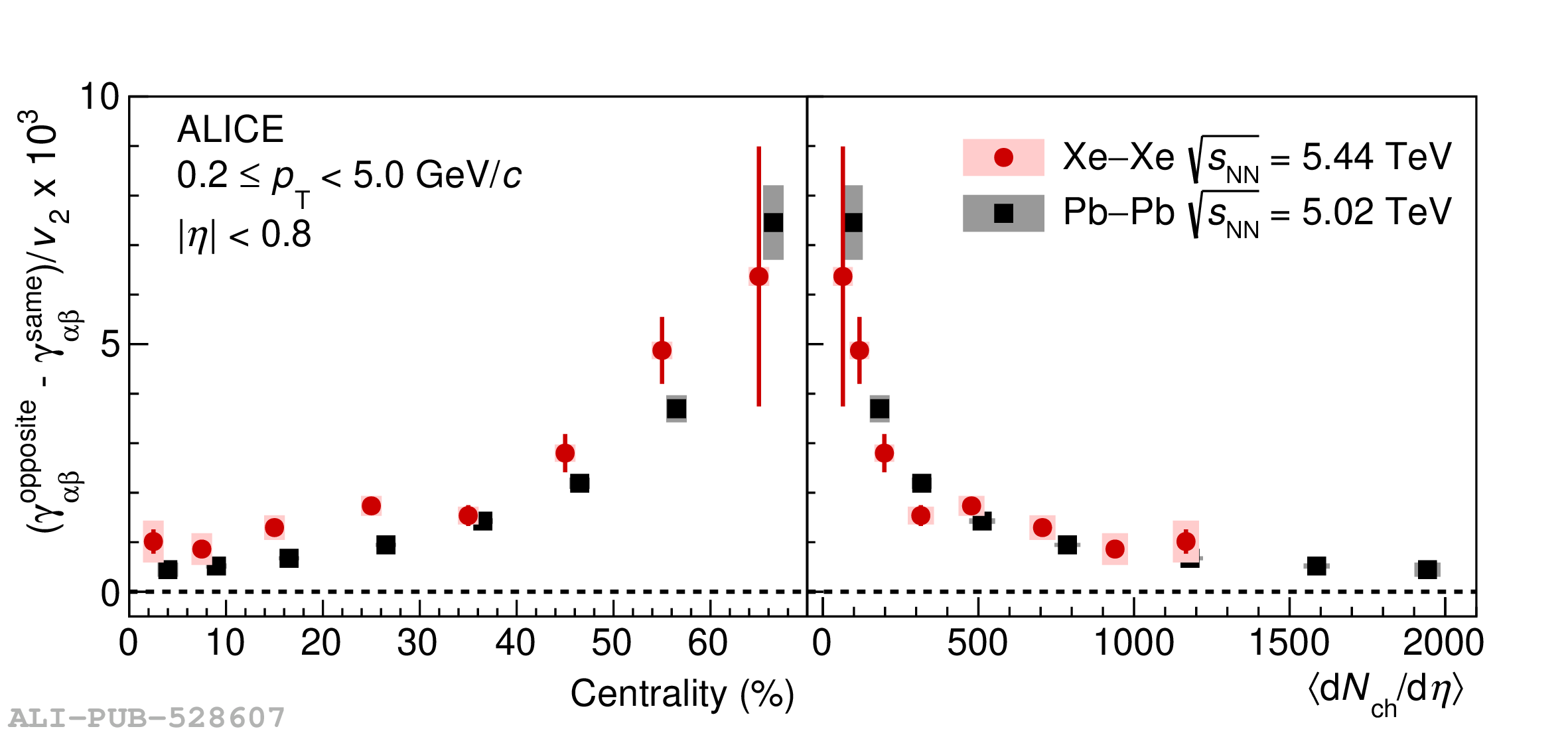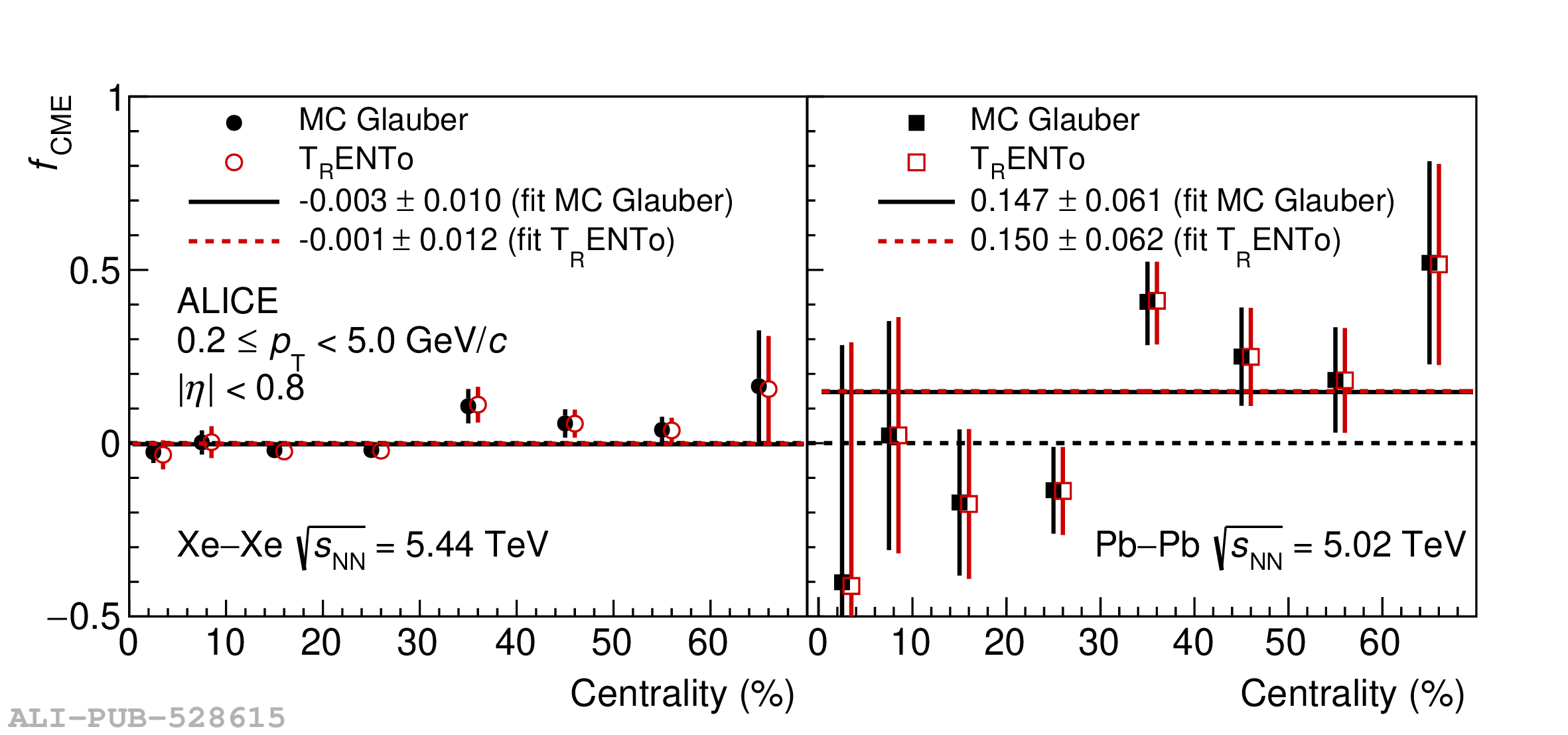Charge-dependent two- and three-particle correlations measured in Xe-Xe collisions at $\sqrt{s_{\mathrm{NN}}} = 5.44$ TeV are presented. Results are obtained for charged particles in the pseudorapidity range $|\eta|<~0.8$ and transverse momentum interval $0.2 \le p_{\rm T}<~5.0$ GeV/$c$ for different collision centralities. The three-particle correlator ${\gamma_{\alpha\beta}} \equiv {\langle \cos(\varphi_\alpha + \varphi_\beta - 2{\Psi_{\rm 2}}) \rangle}$, calculated for different combinations of charge sign $\alpha$ and $\beta$, is expected to be sensitive to the presence of the Chiral Magnetic Effect (CME). Its magnitude is similar to the one observed in Pb-Pb collisions in contrast to a smaller CME signal in Xe-Xe collisions than in Pb-Pb collisions predicted by Monte Carlo (MC) calculations including a magnetic field induced by the spectator protons. These observations point to a large non-CME contribution to the correlator. Furthermore, the charge dependence of ${\gamma_{\alpha\beta}}$ can be described by a blast wave model calculation that incorporates background effects and by the Anomalous Viscous Fluid Dynamics model with values of the CME signal consistent with zero. The Xe-Xe and Pb-Pb results are combined with the expected CME signal dependence on the system size from the MC calculations including a magnetic field to obtain the fraction of CME contribution in ${\gamma_{\alpha\beta}}$, $f_{\rm CME}$. The CME fraction is compatible with zero for the 30% most central events in both systems and then becomes positive. This yields an upper limit of 2% (3%) and 25% (32%) at 95% (99.7%) confidence level for the CME signal contribution to ${\gamma_{\alpha\beta}}$ in the 0-70% Xe-Xe and Pb-Pb collisions, respectively.
Phys. Lett. B 856 (2024) 138862
HEP Data
e-Print: arXiv:2210.15383 | PDF | inSPIRE
CERN-EP-2022-220
Figure group






